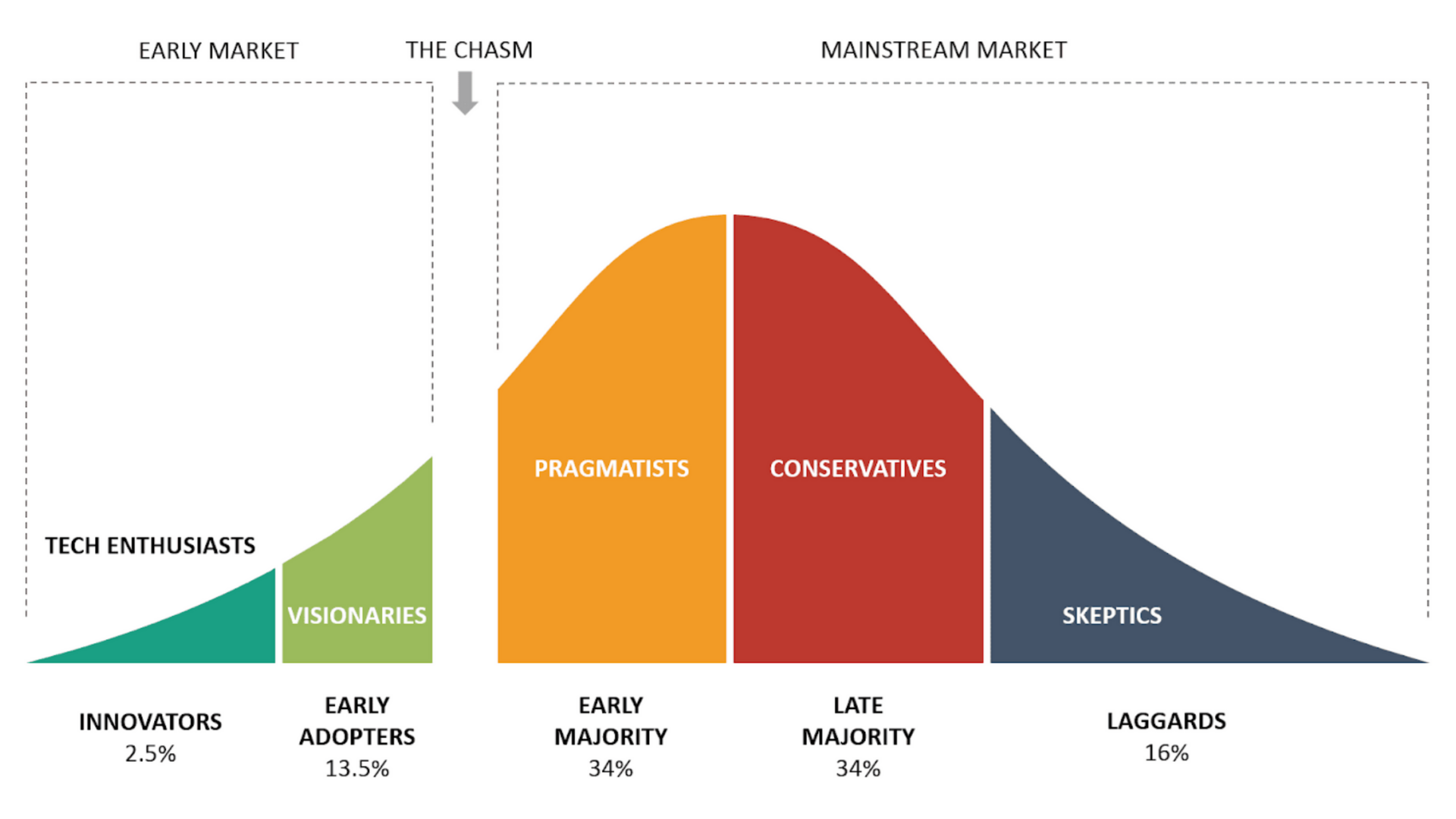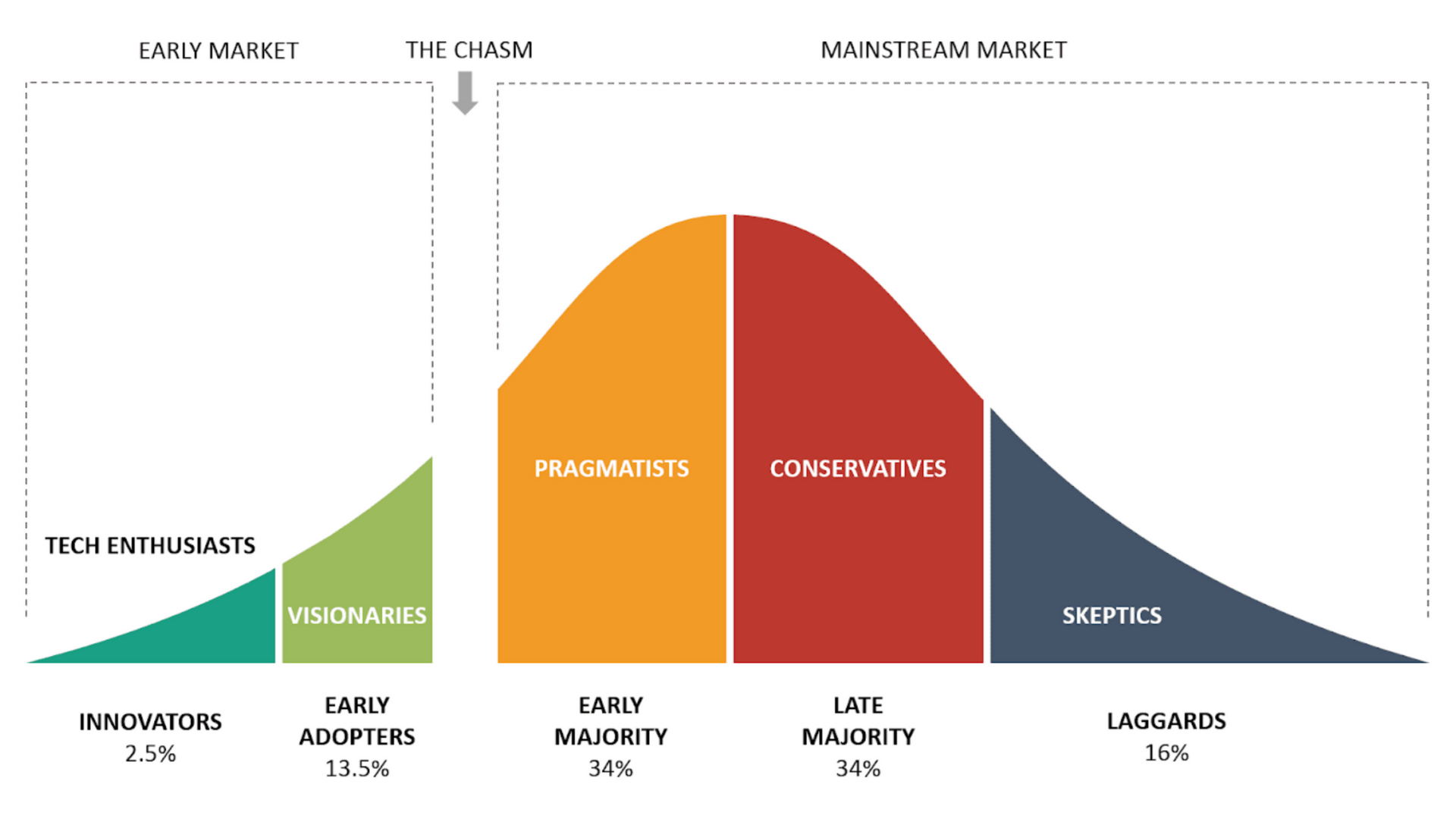No one’s logging into your learning platform. Great.
You could count on one hand the number of courses taken that aren’t the mandatory compliance ones.
Is it the content that’s the problem? Well, let’s add some more. Maybe a sprinkle of user generated content to get them involved or you could run a prize draw competition to drive engagement?
Still not working? Why has your LMS become a ghost town then?
Now on face value the above could be valid ideas to help improve your learner engagement, so don’t completely discard them. However, they won’t necessarily solve your problems of a ghost town LMS (or LXP).
So who you gonna call? Ghostbusters! Ok, that was a very bad dad joke.
No it won’t be Bill Murray in overalls coming to save you this time. To solve this problem you are going to call on one key thing: a product mindset.
What is a product mindset?
To put it simply, a product mindset is seeing a holistic approach to delivering solutions to your customers that adds value. It’s continuously developing that solution, using data for insight, and giving a good customer experience along the way. In a product mindset, it’s about outcomes, not output.
Let’s put that into context a little for the learning space. The customers are your people (or learners if you like). The problems you’re trying to solve can be vast but specific to your business such as skills gaps causing performance issues, lack of talent tracking or career pathways resulting in high turnover of staff. And when we talk about ‘the solution’ I mean the whole L&D offering; from the platform, content (face to face and digital) marketing and user experience.
The final thing to clarify is outcomes over output. This is referring to a change that can be clearly linked back to solving the problem. For example, having 500 courses available is an output and doesn’t mean much. But having 20% improvement of internal recruitment as a result of people completing the new available career paths, is an outcome..
To help break down some potential action points for your ghost town LMS let’s approach two separate journeys: new and existing platforms.
My new LMS platform is a ghost town
Let’s set the scene. You’ve just launched a new platform into your business and yet despite it being the new cool tech and fresh out of the box, it’s still a ghost town. Only a small amount of people are logging on, not many people complete content and it’s just not getting the traction you were expecting, despite everyone calling out for this. Here’s five things to consider.
1. Did you do your user research?
User research is a key part of any new product. It’s what helps us define the user and business problems, challenges, motivators and goals. This insight is what helps define the product you create. Before bringing in a new platform, did you ask the users what problems they had, what challenges they were facing and what the blockers were to achieving their goals? It’s easy to assume that the solution to people asking for more learning to be available is to bring in a new platform and go digital. But what might sit behind that is a specific need for content, pathways or features. If you didn’t get out and speak to your end users, then go and do that now, as business metrics will paint only some of the picture. You can then find out why they’re not using the platform and completing content. Remember though, it’s not a numbers game and people just completing content isn’t the goal; it’s about what problem are you trying to solve with that platform and content (outcome vs output).
2. Do people know about it?
Just because you build it, doesn’t mean they will come. You need to make people aware of the new platform, content or features. This is where the term ‘marketing for learning’ comes in. Ideally this stage starts when you’re in the design and development stage. You create excitement, get the word out about what’s coming and the value proposition. Then once you launch, you carry on that story. People can’t interact with a platform they don’t know exists or if they can’t see what’s in it for them. It would be like Apple launching a new iPhone and never marketing it and being shocked that only a few people know about it. This doesn’t all fall on the L&D team though, so look to leverage your comms and leadership team as well. Just make sure they fully understand the product and make them almost a ‘sales team’ for the platform.
3. Is it what people need to solve real problems?
This comes back to the first point about user research but you do need to be honest and ask ‘does this platform deliver value to our customers and solve their problems?’ Now, problems can span a number of different things and it’s down to research to truly understand them. A great technique here is the ‘5 whys’. Once you have a ‘problem’ keep asking ‘why’. Let’s look at how this might play out if we want to know why people aren't taking any content. Remember to always frame things from the user’s perspective.
- The content isn’t easy to access – why?
- It’s hard to find the content I want – why?
- The search tool doesn’t work very well – why?
- It doesn’t show up what I’ve actually searched for - why?
- I searched for soft skills training but nothing shows - why?
You don’t have to stick to 5, it’s just the principle we’re interested in; getting down to the truest sense of what the problem, or problems, are. I will call out that you might end up with multiple pathways to go down. For instance in the above scenario they said they can’t find content by searching, but then they also said the catalogue is too busy, then you have two streams you need to drill down into more. If you sit at the top then you end up guessing the solution or assuming you know it, which usually leads to more gimmicks being added to try and force engagement.
Make sure you understand your people's real issues, challenges and goals. Then build your platform to solve that. This might end up with multiple dashboards for different audiences, stripping back features to simplify it or a complete content overhaul. It may not even be a learning problem at all - maybe the issue they’re facing is related to another arm of the business such as communication or internal processes etc.
But until you know that, you’ll just be guessing and following trends. If you're solving real problems, you won't have a ghost town LMS.
4. Have you added too much?
Sometimes less is more. When launching a brand new platform it can be easy to try and go big and bold, giving people lots of options, features and content. This can have the reverse effect though and overwhelm people.
Start smaller and grow based on user feedback. Now this doesn’t mean you won’t or can’t use features within your new platform, but initially look to put out an MVP (minimum viable product) and gain feedback on this before adding new features and content. To be clear, an MVP still solves the user problems but in the simplest way. So you might need to strip it back a little if you’ve gone full fat on all the ideas and features straight away.
My advice is to look at your content overall and determine if the right content is on there to begin with - not just quick wins like YouTube plugins or existing PDFs that didn’t have an impact in the first place.. There’s no right answer here as this again goes back to that holistic view of ‘what problems are you trying to solve to create customer and business value?’.
Maybe your best course of action is to start with just user generated content, or perhaps you actually need to avoid it completely if it’s not right for your users. Again, this is about listening to your people, solving real problems and outcomes, over output.
More doesn’t mean better. Adding value means better.
5. Can people use it?
The platforms you bring in are typically backed by extensive research, so the overall usability of any platform should be solid. However, complication and confusion may arise from how you set it up and use the platform.
One consideration is how you organise your content: learning paths, catalogs, locked content or an open source free for all. Again, there is no right answer here as all of these can have value but it circles back to that outcome. If your goal is to create clearer career pathways in your business so people can progress internally and you have improved talent retention, then create a content architecture and experience that supports this goal.
Users will want it to be clear what they should complete, where to go next and how to expand on that knowledge. However, if the user needs quick, in the moment learning experiences whilst a customer is on the phone, then locking things in pathways, prerequisites or long content wouldn’t be the right way to go.
There won’t be one single user need or problem across your whole business, so it might be that you need to solve multiple user needs. This is where you must make sure it’s set up for how people expect to use it, not how you think they will. Get people to test it, give feedback and don’t be afraid to change what you’ve made if it’s not the right solution.
My existing LMS platform is a ghost town
Let’s set the scene. You’ve got an existing platform that’s been in your business a while. Maybe you once had some great success with it and it was an integral part of peoples’ development. Or maybe it’s just always been a bit of a non-starter, and it’s been left to collect dust outside of the annual compliance eLearning. Either way, you need to take some action to get your ghost town LMS back in the race.
Have you done your user research?
Ok, I sound like a broken record here, but start by talking to your users. Why aren’t they using it? Does it meet their current needs or is it stuck in the past? Maybe the tech itself is outdated. It could be as simple as there’s been such a high staff turnover people no longer know about it. The only way to get the insight is to go straight to the source. Once you know ‘why’ then you can plan to dust off those cobwebs and kickstart it again.
You’ll notice I’m staying clear of suggesting to ask people ‘what do you think you need or want?’. There is a reason for this. People don’t always know what they want, nor have the time to try to think up solutions to their problems – that’s our job. You’re merely gaining insight into the challenges, problems and goals of the users, not trying to get the solution from them.
Henry Ford once said, ‘if I asked people what they want, they would have said a faster horse. People don’t know what they want until you show it to them.’
So remember, keep your user research focused on the outcomes needed, not peoples’ dreams or desires.
What does history say?
Look back at the history of your LMS. Was there once a time when people were using it?
Now, here is where we need to be careful so we don’t get too sucked into vanity metrics. Just because people logged in and did a course, doesn’t mean your platform and content was once successful. When you look at those peaks (assuming they exist) make sure you also overlay any actual business metrics; after all your issue might be that the content was consumed, but it didn’t have the desired impact – in which case a change in content is needed. However, if that content did have an impact, then maybe the content is no longer relevant to your users, and they need updated stuff.
If you’ve never had people using your platform it’s likely you missed lots of steps when setting it up, such as user profiling, validating the problems of the users, or the way it was launched and marketed. And let’s be honest, with how quickly people have had to go digital over the last 2 years, this is highly likely. Understandably, businesses needed to be agile and fast to keep going. But, now the dust is settling, take the opportunity to look again; iterate, validate and evolve.
Now, we can’t talk about history without talking about the adoption curve.

The adoption curve shows the stages a product will go through in the market to be successful. In our case our market is our internal users. You can see you’ll have some early success with those people that want to explore without reason (green zones), start using it and source their own value proposition from the product. The danger comes when you reach the gap between early adopters and early majority, known as ‘the chasm’.
If your platform is awesome and delivers a clear value to your users then you will sail smoothly through this chasm. However, if there isn’t a clear value proposition, this is when you will start to see your LMS become a ghost town. This is why ‘engagement’ can be a misleading data point to be looking at - it’s unrealistic to expect everyone, all the time, to be using your platform, unless it’s more of an ‘in the flow’ knowledge base.
Make sure your LMS is a ghost town before you declare it one and you’ve not just got unrealistic expectations of the level of use. If it’s having the right business impact, then it’s working. If there’s no impact to the business, then yes, look at what needs to be done.
How consistent are you?
Any great LMS or learning offering is always developing and never stays still. I’ve seen platforms over five years down the line which are unchanged since launch. It’s the same content, or more has been added to the old and so it’s become a playground of jumbled legacy content mixed with the new. The point here is to be consistent in your maintenance, iteration and evolution of your platform’s content or features. What people need now vs what they will need in the future will change as the business (and world around it) changes and grows.
This also goes for how often new content is available. If you only have waves of content being updated or new content available, and then 6 months go by with nothing, people won't know it’s there. I’m not saying make content for the sake of it so you can release something every week, but be consistent in how you launch and market it to the business. People won't look every week for new content (some will, but the majority wont, sorry) so make sure you launch content in the same way every time. There needs to be a clear comms plan when there are changes. Also look at how you make leaders aware of new content so they can start recommending it off the back of coaching sessions. It isn’t just the L&D team's job to promote and recommend learning interventions.
With anything, make sure you evaluate the effectiveness of your approach. If it doesn’t work, then change – don’t keep doing things which aren’t adding value.
Get your LMS engagement back on track
You can see there are many ways you can try and identify why your LMS is a ghost town. The running theme as we’ve seen is about getting out and talking to your people, understanding the real problems your platform and content need to solve, and making sure there is a clear value proposition to your platform.
Having a product mindset when it comes to L&D is vital. Not only because it gets you looking more holistically but you also start working on outcomes rather than output.
To learn more about having a product mindset I would highly recommend the book ‘Continuous Discovery Habits’ – by Teresa Torres. This book explores more about outcomes vs outputs but importantly how to create products that create customer and business value.
If you’re in the process of building your learning strategy and would like to run some ideas past another learning professional, feel free to reach out to Phill for a quick no-obligation chat. Or check out some of our other useful blogs such as ‘How to create a Learning Strategy that doesn’t suck’ for more tips and tricks.


.jpg)
.png)
